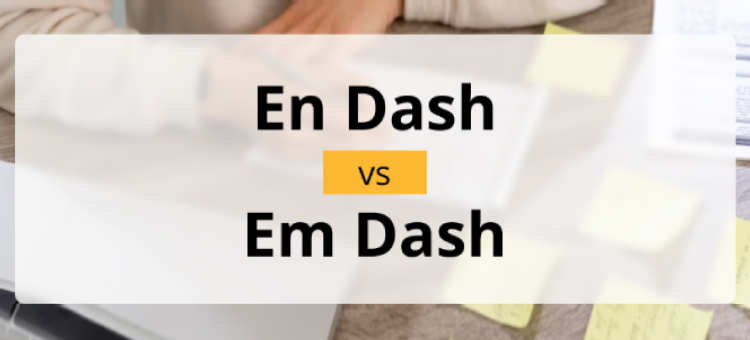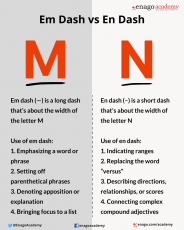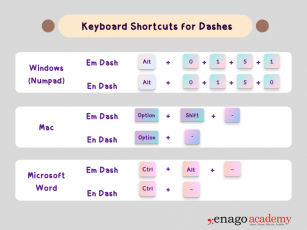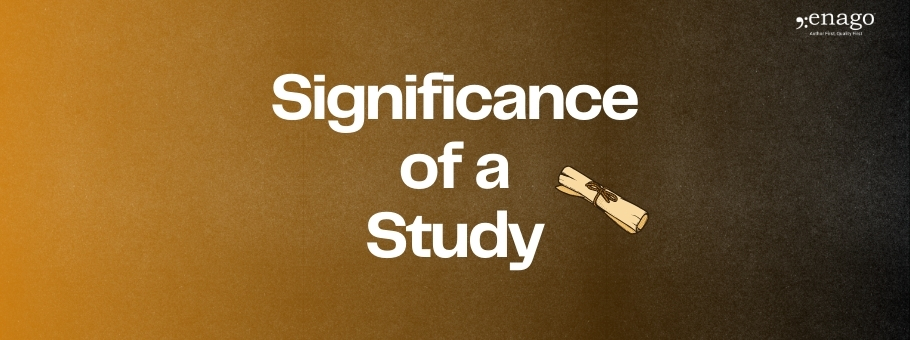Punctuate With Precision: Learn how to correctly use the em dash and en dash

In writing, every mark has a purpose and every pause holds potential. Punctuation is a fundamental aspect of written communication that plays a crucial role in conveying meaning, enhancing clarity, and ensuring coherence in our writing. It serves as a set of tools that enable us to structure our thoughts, guide readers through our words, and accurately convey our intended messages. Among the set of punctuation marks, dashes stand out as versatile and impactful tools that add emphasis, clarity, and a touch of flair to our writing. Whether it’s the powerful em dash (—) or the connecting en dash (–), understanding how to effectively use dashes can elevate our prose and captivate readers.
In this article, we will explore the importance of dashes, their various functions, and how they enhance our writing. From emphasizing key points to indicating ranges and connections, dashes play a significant role in shaping the way our words are perceived. So, let’s dive in and discover the hidden power of dashes in creating impactful and engaging written communication. Grab your quill and prepare to punctuate with precision!
What Are Dashes?
Dashes are punctuation marks that consist of horizontal lines used to indicate breaks, interruptions, or connections within a sentence. They come in two main forms: the em dash (—) and the en dash (–). Confusion often arises between the two types of dashes and another common punctuation mark, the hyphen (-). Dashes serve multiple purposes in writing, such as connecting words or numbers and creating pauses within sentences. However, it’s important to note that the specific type of dash to use varies depending on the context.
The importance of dashes in writing is often undervalued. Consequently, here are some key reasons why dashes hold significance:

1. Emphasis and Interruption
Dashes are powerful tools for emphasizing specific phrases or ideas within a sentence. Em dashes create a strong break or interruption, drawing attention to the enclosed text and adding emphasis. By replacing parentheses or commas, em dashes provide a more dramatic effect, making your writing more engaging and impactful.
2. Clarity and Additional Information
Dashes contribute to clarity and coherence by helping convey complex ideas or providing additional information. Em dashes serve as signposts, indicating a shift in thought or introducing a related but distinct element. They allow for the inclusion of explanatory or clarifying phrases, enhancing the reader’s understanding and ensuring your message is communicated effectively.
3. Connecting and Indicating Ranges
En dashes are particularly useful for indicating connections or relationships between elements. They can denote ranges in numbers, dates, or times, providing a concise and clear representation. En dashes help establish connections without interrupting the flow of the sentence, enabling smooth and coherent writing.
4. Style and Visual Impact
Dashes add style and visual interest to your writing, thus making it more dynamic and engaging. They break up long sentences, provide natural pauses, and create visual breaks on the page. Additionally, dashes allow for more varied sentence structures and can help you develop a unique writing style that stands out.
5. Precision and Accuracy
Proper usage of dashes demonstrates your attention to detail and commitment to clear communication. Understanding when to use em dashes or en dashes ensures precision in your writing, eliminating ambiguity and preventing misinterpretation. It showcases your professionalism and enhances the credibility of your work.
Both em dashes and en dashes have their own distinct uses and can significantly enhance the clarity, emphasis, and style of your writing. Understanding how to correctly use these dashes will empower you to punctuate with precision.
The Em Dash — A break in the flow
The em dash (—) is longer than both the hyphen and the en dash. It is named after its approximate width, which is equal to the width of the letter “M”. It offers a more dramatic pause or interruption within the text and serves as a break in the flow of a sentence. Acting as a spotlight, it draws attention to the enclosed text and creating a momentary diversion before resuming the original thought. By effectively utilizing the em dash, writers can add a touch of intrigue and zing, allowing readers to pause, reflect, and appreciate the nuanced rhythm of the written text.
When to Use Em Dash
Here are some common scenarios when you may want to use an em dash:
1. Emphasizing a Word or Phrase
Use an em dash to draw attention to a specific word or phrase, adding emphasis to it within a sentence.
Example: “The research findings revealed a substantial improvement in patient outcomes — reduced hospital readmissions and improved quality of life.”
2. Setting Off Parenthetical Phrases
Use an em dash to enclose parenthetical phrases or additional information within a sentence, providing clarity or amplifying a point. It acts as a powerful interruption, providing a stronger break than other punctuation marks like commas or parentheses.
Example: “The questionnaire included questions related to participants’ demographics — age, gender, and educational background—to ensure a representative sample.”
3. Denoting Apposition or Explanation
Appositives provide additional information or clarification about a noun or noun phrase. Use em dashes to create a clear distinction between the appositive and the rest of the sentence which is already internally punctuated.
Example: “The participants — students from different disciplines, including biology, psychology, and sociology — completed the questionnaire.”
4. Bringing Focus to a List
When a sentence starts with an independent clause and concludes with a list, a colon can be used to link the clause and the list. However, when the list is placed at the beginning, it is more effective to use a dash to connect it with the clause. Thus, this technique helps consolidate potentially disparate elements into a unified idea, enhancing readability and comprehension for the reader.
Example: “The conference featured renowned speakers, interactive workshops, networking opportunities — all designed to enrich the attendee’s professional development.”
The En Dash — Connecting the Dots
While the em dash shines in providing emphasis and interruption, the en dash excels at linking elements, indicating ranges, or establishing connections. The en dash is shorter, approximately the length of the letter “N”, hence its name. It seamlessly bridges gaps and creates a sense of cohesion in your writing.
When to Use En Dash
Let’s explore some common scenarios where the en dash shines:
1. Indicating ranges
One of the primary functions of the en dash is to denote ranges between numbers, dates, or times.
Example: “The conference will take place on October 10 – 12, 2023.”
2. Replacing the word “versus”
Use an en dash to succinctly highlight the contrasts between different variables, groups, or concepts.
Example: “The qualitative – quantitative research approaches yielded distinct perspectives on participants’ experiences.”
3. Describing directions, relationships, or scores
Use en dash to convey the meaning of “to” or “and” in various contexts beyond numerical ranges.
Example: “The Boston – Washington train departs at 6 p.m.”
Example: “The article discussed the benefits of a mentor – mentee relationship in academic settings.”
4. Connecting complex compound adjectives
In compound adjectives where one of the elements consists of two words, use en dash as a substitute for a hyphen to enhance clarity and avoid ambiguity.
Example: “The post – World War II era was marked by significant changes.”
Common Mistakes to Avoid When Using Dashes
1. Overusing Dashes
While dashes can be effective, it’s important not to overuse them. Instead, they should be used sparingly and strategically for emphasis or clarification. Using too many dashes can make your writing appear cluttered and disrupt the flow.
2. Neglecting Other Punctuation Marks
Dashes should not replace other necessary punctuation marks. Avoid using dashes when commas, colons, or semicolons are more appropriate. Each punctuation mark has its own purpose, so make sure to use them correctly alongside dashes.
3. Neglecting Consistency
Consistency is key when using dashes. Make sure to establish a consistent style throughout your writing. For instance, according to the guidelines provided by the Associated Press Stylebook, it is recommended to include a space before and after an em dash. This spacing convention is commonly observed in newspapers and other publications that adhere to AP style. Therefore, it is advisable to consult your organization’s style guide for specific instructions regarding the spacing around dashes.
4. Using dashes instead of words:
Whether or not you should use a dash at all depends on your sentence construction. For example, if you’re using the word “from,” what should probably follow is the word “to,” not an en dash. For example: “The experiment is conducted from June to August” or “The experiment is conducted June – August,” not “The experiment is conducted from June – August.”
There are several useful tools available to check and improve your punctuation in writing. While these tools can be helpful, they are not foolproof. It’s always essential to review and revise your writing manually to ensure accuracy and context-specific punctuation usage.
Bonus Tips
In addition to understanding the usage and importance of the em dash and en dash, mastering the skills to type them correctly can further enhance your writing proficiency. Here are some keyboard shortcuts that will assist you in effortlessly typing em dash and en dash:
In Conclusion
Mastering the correct usage of the em dash and en dash can greatly enhance your writing and elevate your communication skills. These punctuation marks serve distinct purposes and understanding when and how to use them can bring clarity, emphasis, and cohesion to your sentences. The em dash, with its versatility, allows you to indicate interruptions, create emphasis, set off appositives, and link clauses. On the other hand, the en dash shines when indicating ranges, connections, and alternatives.
So, go ahead, embrace the power of dashes, and let them guide your words with precision and style. We invite you to explore Enago Academy Open Platform and share your perspectives as Thought Pieces, Review Articles, Study Reports, and more. Let’s collectively contribute to the understanding of the challenges and opportunities that arise in academia.
Frequently Asked Questions
The em dash and en dash serve distinct purposes in punctuation. The em dash (—) is primarily used to indicate interruptions, emphasize elements, set off appositives, replace colons or semicolons, and create a break in sentence flow. It adds emphasis and draws attention to the information enclosed by the dash. On the other hand, the en dash (–) is commonly used to show ranges, connections, or contrasts between elements such as dates, times, or scores. It represents a connection or relationship between the elements it separates.
An em dash (—) is a punctuation mark that is longer than a hyphen (-) and is named after its length, which is roughly the width of the letter “M”. It is used to indicate interruptions, emphasize elements, set off appositives, introduce additional information or an explanation, replace colons or semicolons, and create a break in the flow of a sentence. The em dash is versatile and adds emphasis and impact to the information it encloses.
An en dash (–) is a punctuation mark that is slightly longer than a hyphen (-) and is named after its approximate width, which is roughly the width of the letter “N”. The en dash is primarily used to show ranges, connections, or contrasts between elements. It is often used in contexts such as:
Dates: "The event will take place from June 1 – 5." Pages: "Please refer to pages 10 – 15 for more information."
Scores: "The final score was 2 – 1 in favor of the home team." Connections: "The London – Paris flight was delayed due to bad weather."
The difference between a hyphen (-) and a dash (either the en dash or the em dash) lies in their length and specific usage.
1. Hyphen: Length: The hyphen is the shortest in length among the three punctuation marks.
Usage: The hyphen is primarily used to join words together, indicating compound words or linking prefixes and suffixes to base words. It can also be used to separate syllables at the end of a line of text. 2. En Dash (–):
Length: The en dash is longer than a hyphen but shorter than an em dash. Usage: The en dash is mainly used to indicate ranges or connections between elements, such as dates, times, scores, or pages. It represents a span or relationship between the separated elements.
3. Em Dash (—): Length: The em dash is the longest among the three punctuation marks.
Usage: The em dash has a versatile usage. It can be used to indicate interruptions in a sentence, emphasize elements, set off appositives, replace colons or semicolons, or create a break in the flow of a sentence. It adds emphasis and draws attention to the enclosed information.
There are two primary types of dashes: the em dash (—) and the en dash (–).
1. Em Dash: Length: The em dash is the longest dash. Usage: The em dash is used to indicate interruptions, emphasize elements, set off appositives, replace colons or semicolons, or create breaks in sentence flow. It adds emphasis and draws attention to the enclosed information.
2. En Dash: Length: The en dash is shorter than the em dash but longer than a hyphen.
Usage: The en dash is primarily used to show ranges, connections, or contrasts between elements. It indicates a span or relationship between the separated elements. The en dash is commonly used for dates, times, scores, or other contexts where a range or connection needs to be conveyed. Both the em dash and en dash have distinct functions and usages, and it's important to understand when to use each one correctly to enhance clarity and convey meaning effectively in your writing.











